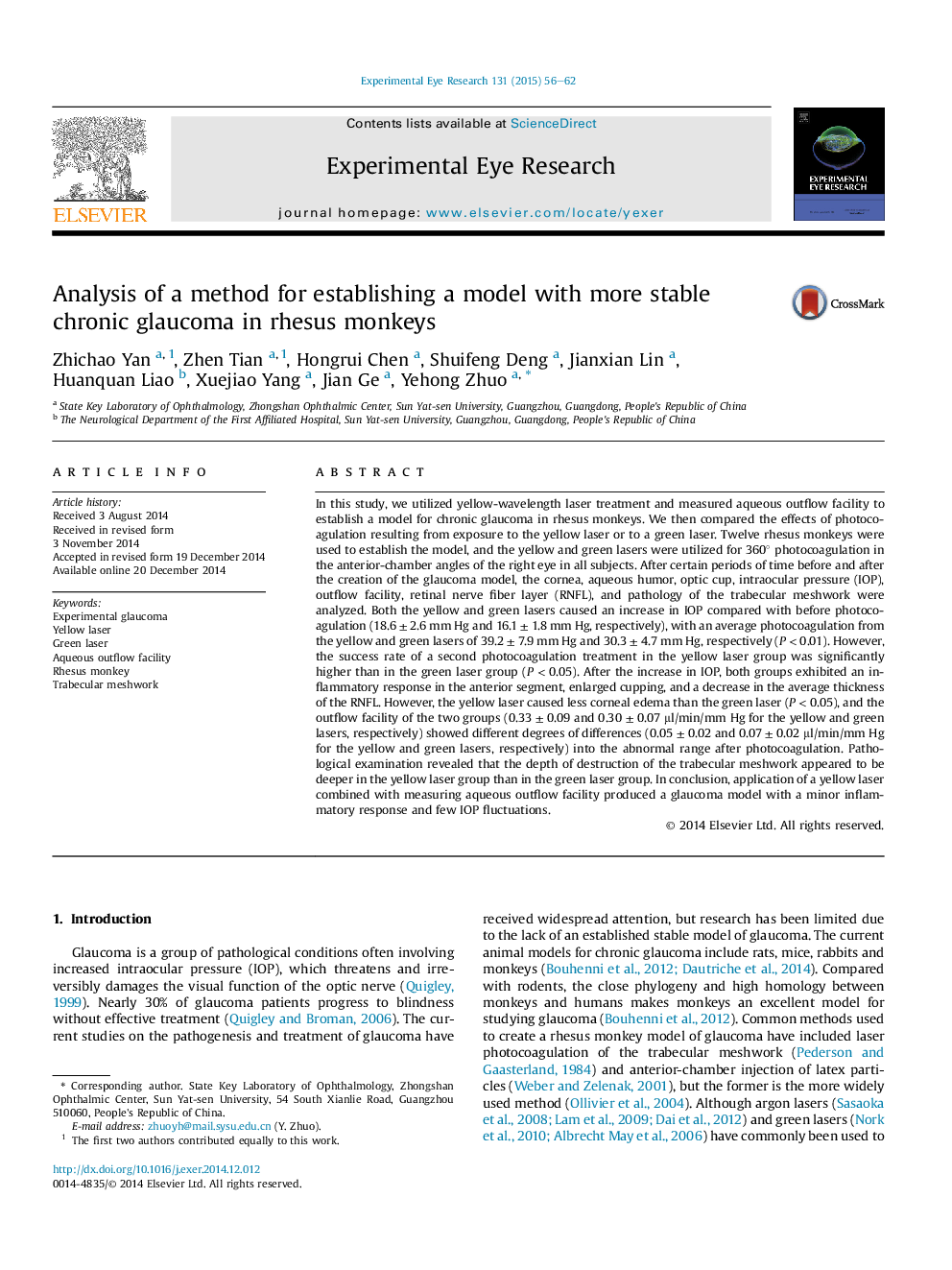| کد مقاله | کد نشریه | سال انتشار | مقاله انگلیسی | نسخه تمام متن |
|---|---|---|---|---|
| 6196687 | 1602591 | 2015 | 7 صفحه PDF | دانلود رایگان |
- We induced glaucoma model successfully in rhesus monkeys by yellow wavelength laser.
- Compared to green laser, yellow laser could produce a more stable glaucoma model.
- Aqueous outflow facility played an important role in laser-induced glaucoma model.
- We found that the model resulted in optic disc hemorrhaging following increased IOP.
In this study, we utilized yellow-wavelength laser treatment and measured aqueous outflow facility to establish a model for chronic glaucoma in rhesus monkeys. We then compared the effects of photocoagulation resulting from exposure to the yellow laser or to a green laser. Twelve rhesus monkeys were used to establish the model, and the yellow and green lasers were utilized for 360° photocoagulation in the anterior-chamber angles of the right eye in all subjects. After certain periods of time before and after the creation of the glaucoma model, the cornea, aqueous humor, optic cup, intraocular pressure (IOP), outflow facility, retinal nerve fiber layer (RNFL), and pathology of the trabecular meshwork were analyzed. Both the yellow and green lasers caused an increase in IOP compared with before photocoagulation (18.6 ± 2.6 mm Hg and 16.1 ± 1.8 mm Hg, respectively), with an average photocoagulation from the yellow and green lasers of 39.2 ± 7.9 mm Hg and 30.3 ± 4.7 mm Hg, respectively (P < 0.01). However, the success rate of a second photocoagulation treatment in the yellow laser group was significantly higher than in the green laser group (P < 0.05). After the increase in IOP, both groups exhibited an inflammatory response in the anterior segment, enlarged cupping, and a decrease in the average thickness of the RNFL. However, the yellow laser caused less corneal edema than the green laser (P < 0.05), and the outflow facility of the two groups (0.33 ± 0.09 and 0.30 ± 0.07 μl/min/mm Hg for the yellow and green lasers, respectively) showed different degrees of differences (0.05 ± 0.02 and 0.07 ± 0.02 μl/min/mm Hg for the yellow and green lasers, respectively) into the abnormal range after photocoagulation. Pathological examination revealed that the depth of destruction of the trabecular meshwork appeared to be deeper in the yellow laser group than in the green laser group. In conclusion, application of a yellow laser combined with measuring aqueous outflow facility produced a glaucoma model with a minor inflammatory response and few IOP fluctuations.
Journal: Experimental Eye Research - Volume 131, February 2015, Pages 56-62
